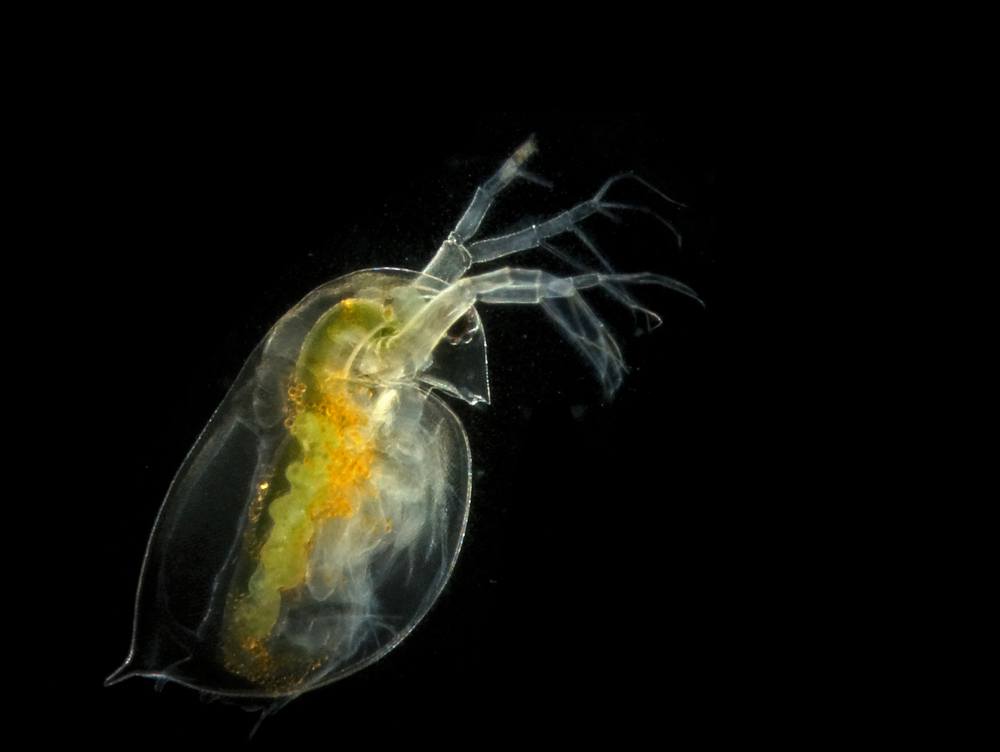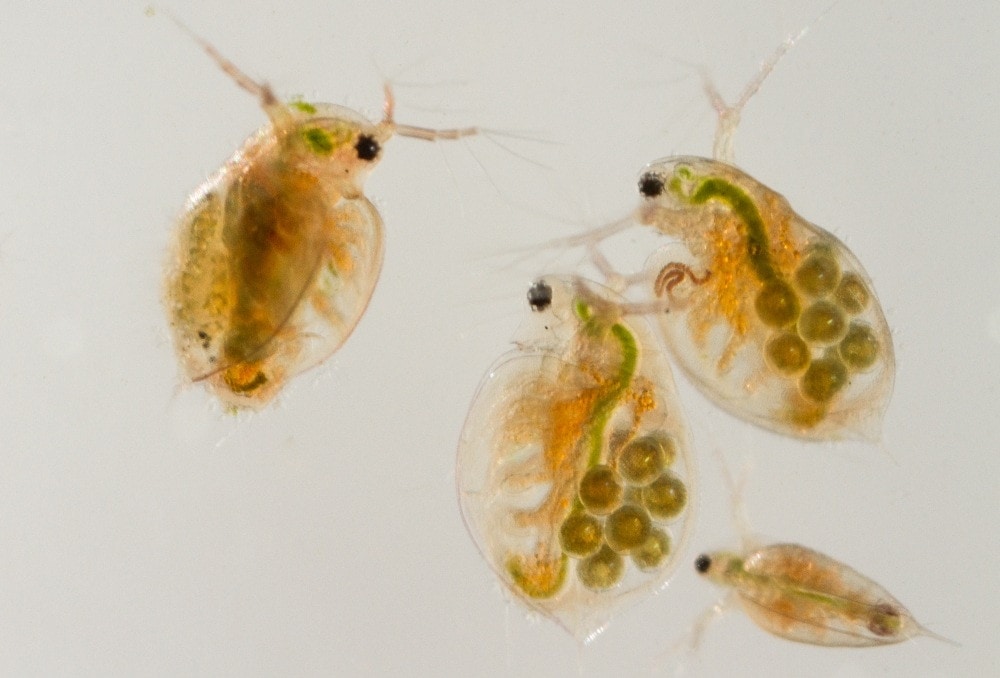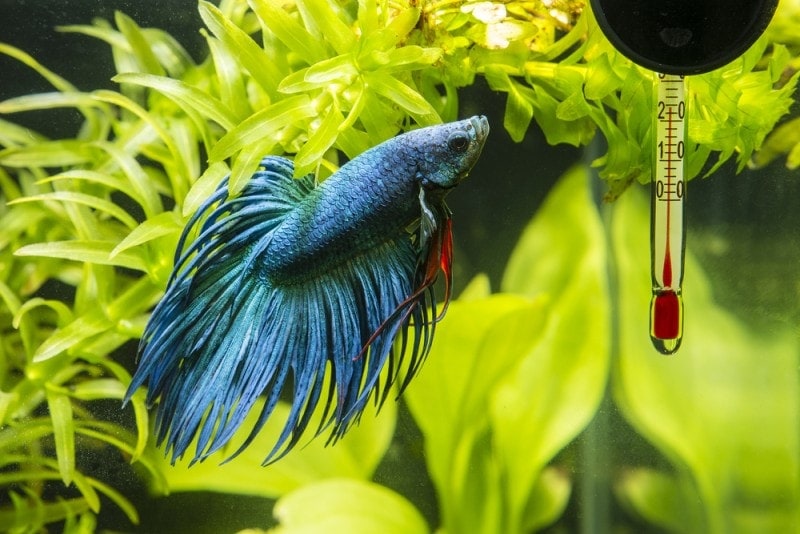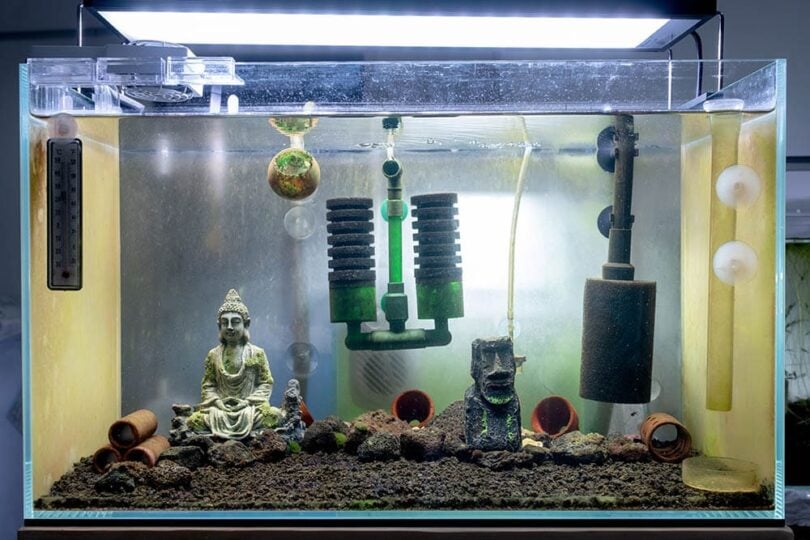How To Grow Daphnia For Your Aquarium? 11 Easy Steps

Updated on

You might have heard of daphnia before, especially when it comes to feeding aquarium fish. Yes, they are used as food, but what are they. We are here today to talk about what these little creatures are, why you might want to grow them at home, and what they are used for.
How to grow daphnia for the aquarium is the main point we are here to discuss right now but let’s first look at what Daphnia are and why you would consider growing them.
 What Are Daphnia?
What Are Daphnia?
Daphnia are little creatures that you can barely see with your eyes. They are a small type of planktonic crustacean. In other words, daphnia is both crustaceans and plankton, some of the smallest crustaceans in the world. Daphnia are often referred to as common water fleas.
They range in length from 0.2 to 0.5 mm, so they are indeed very small. They are semi-transparent, which means they let some light through their bodies, making them even harder to see. They feature prominent eyes with long antennae.
These creatures can be found in oceans all across the world and they serve as a big food source for small and big sea-dwelling creatures alike.

Why Grow Daphnia?
There is only one reason why you would grow daphnia at home. This is to feed your fish. Sure, you can feed your fish pellets and flakes, but those are not the healthiest fish foods, nor will your fish like them all that much.
Fish that eat meat love live foods, especially tasty little morsels like daphnia. Chasing daphnia around provides your fish with exercise, plus it lets them hunt just like they would in the wild.
There is also the fact that daphnia are packed to the brim with nutrients, something your fish will appreciate.
Growing Daphnia – Step By Step Instructions
In all honesty, growing these things is not all that expensive, nor is it very hard. Yes, you do need to have the right equipment, but in the grand scheme of things, growing them en masse instead of buying them could save you a whole lot of money.
No, it is probably not worth growing daphnia if you only have a couple of fish to feed. However, if you have lots of hungry mouths in your aquarium, growing daphnia might just be the best solution.
That being said, you can just grow a very small amount of them too. At any rate, let’s talk about how you can grow your daphnia at home right now.
- Step One: You need some kind of container. Large operations often use big concrete vats to grow massive amounts of daphnia, but that is probably not ideal for a home operation. Your best bet is to get a large container with a big surface area. Something like a plastic container, a kiddie pool, or even a 20- or 40-gallon aquarium will do just fine. If you don’t need a lot of daphnias, you can always use something smaller like a 5- or 10-gallon tank, or even just a glass soda bottle too.
- Step Two: Now you need to get a daphnia culture. Daphnia culture is what will grow and develop into real-life daphnia. Make sure to get your daphnia cultures from a reputable source such as your local high-quality fish-keeping store. However, you can find them online as well. Just make sure you get high-quality cultures because how well the daphnia grows and develops will depend on it.
- Step Three: It is a good idea to have several containers on the go at once. This way, if one of the cultures does not work out, or one of the buckets dies off, at least you have more in reserve. We would recommend starting the cultures on different days (if you are doing multiple loads). This way you will have daphnia ready to harvest on multiple consecutive days.
- Step Four: Either way, now you need to add water to the buckets. Make sure to get a water softener and some kind of de-chlorinator liquid. Daphnia cannot handle any amount of chlorine, so this is essential. They also don’t like hard water, so a softener is also crucial. If you add tap water directly to the cultures, they will surely die.
- Step Five: The good thing about daphnia is that it can handle varying pH levels. They have no problem growing in water that has a pH level between 6.2 and 8.9. As you can see, they can handle water on the more basic side of things better than more acidic water. Most people try to keep the water at a pH level between 7 and 7.9. If you need help increasing your pH level then see this article and if you need to lower your pH level then this article will help.
- Step Six: Daphnia cultures and growing daphnia don’t need much oxygen, so you don’t need to worry about oxygen or aeration. As long as the water has a large surface area, this will not be a problem at all.
- Step Seven: You need to have the right water temperature for the daphnia to grow and reproduce. They need the water they live in to be between 72 and 85 degrees Fahrenheit. If the water is any colder than 72 degrees, the daphnia will most likely die off, and any warmer than 85 degrees and they will stop reproducing. We would recommend getting a water heater and keeping the temperature at a steady 80 degrees.
- Step Eight: Daphnia does like and needs sunlight to develop, grow, and reproduce. If you have them outside, you should aim for between 6 and 8 hours of exposure to direct sunlight per day, which will work even if they are sitting in a window. If they are not getting real and direct sunlight, or in other words, if you are using artificial light sources, you should provide them with about 10 hours of light per day.
- Step Nine: Daphnia, just like any other creatures out there, need to eat, so you need to feed them. They do like eating algae, which is convenient because algae are likely to develop in daphnia tanks with lots of light anyway. However, you will probably need to feed them anyway. The best food for daphnia is yeast. They are filter feeders and will absorb the yeast directly from the water.
- Step Ten: You should change about 20% of the water in the daphnia tank every 2 weeks. While they do not require filtration, they will benefit from regular water changes. If you find that your daphnia is not reproducing fast enough, you might want to change more water more often.
- Step Eleven: Use a fine fishnet to harvest the daphnia, using a figure 8 pattern to catch them. Make sure to harvest the daphnia fairly often because the overcrowding of them can lead to the total crash of the culture. If you find that you have too much, you can always freeze-dry the daphnia and save them for later days.
Things to Avoid
- Putting the tank outdoors: Some people prefer to keep their daphnia tank outdoors, and there isn’t necessarily anything wrong with doing it that way. However, outdoor tanks allow for the potential introduction of mosquito larvae, dragonfly larvae, and other parasites and dangerous creatures. You also have far less control over the temperature of outdoor tanks, making it harder to ensure the survival and reproduction of your daphnia.
- Not harvesting: Like any other animal, if daphnia overproduces, you’ll end up with a population crash. This is caused by limited access to food, overcrowding, increased waste production, and lower dissolved oxygen in the water. Even if you aren’t currently feeding your daphnia to anything, it’s a good idea to harvest them from time to time anyway to prevent problems with your population.
- Too hot or too cold: Daphnia prefer to be kept in slightly cooler temperatures, usually around 64-72˚F, give or take. If they are kept too hot or too cold, they will stop reproducing. In extreme temperatures, you may even have a die-off of your adult and juvenile population, leaving you with unhatched eggs as your only hope of the culture continuing. If you live in an area where your temperature stays stable most of the year, you may consider keeping your daphnia tank in a garage or similar structure. These tend to stay cooler than the outdoors, are more protected than the outdoors, and are less likely to experience rapid temperature changes than the outdoors.
- Stagnant water: As previously mentioned, some people feel their daphnia do best with stagnant water. However, stagnant water can lead to issues with smells and is a harsh environment that is unlikely to support life for extended periods of time. Allowing your daphnia culture to live in stagnant water may lead to a population crash.
 Conclusion
Conclusion
As you can see, growing daphnia for fish food is not very hard, expensive, or time-consuming. Yes, you do have to do it the right way, but as long as you follow the tips we have outlined above, you should have a permanent and neverending supply of very nutritious food for your fish.
Feature Image Credit: yosuyosun, Shutterstock










